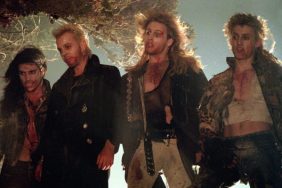The beauty of liberation is that it is a deeply personal affair, requiring none but ourselves to realize. In many ways, it is a test of courage more than anything else: do we have the faith and the will to choose freedom from the known? For artists, the answer is always, “Yes!” That’s what makes them who they are; they cannot be contained by preexisting ideologies. Pablo Picasso knowingly advised, “Learn the rules like a pro, so you can break them alike an artist.” And sometimes all it takes to break the rules is to discard them hand over fist.
Also: “Action Time Vision” Takes You to 7” Heaven
In early 1972, Iwan Schumacher had been living in south London, where he had been teaching photography at an art school. He bought a Canon half-frame camera that allowed him to take 72 pictures, as opposed to 36, on a regular 35mm roll of film. The camera was small enough to travel everywhere he went, quickly becoming a diary of his daily experiences. Later in the year, Schumacher returned to Switzerland to assist on a documentary movie and started to work on his first film. All the while, he continued to take photographs, amassing an archive of more than 3,000 images.


More than four decades later, Schumacher returned to his archive and began to reflect on the body of work he had created through the deceivingly simple process known as “point-and-shoot.” What he found there was freedom: the liberation of youth that allows us to abandon knowledge in search of wisdom itself. This wisdom has been distilled into a book of 124 frames titled 1972 – At Home and on the Way (Edition Patrick Frey).
1972 is an elegant, intimate volume that pulls you close, starting with the lithe hand that appears on the book cover, not quite beckoning, but rather something else—something mysterious and unclear that draws you to it open it up and discover what exists underneath the cover. Here lies the quiet poetry of life that happens all the time, yet escapes our notice because we spend more time in our minds than in the world. Having forgone lessons in favor of experience, Schumacher found beauty in the commonplace, those moments between “moments” that are always happening, and embraces the soft tissue of our existence to describe the very fabric of life.

At the end of 1972, Schumacher reveals in conversation with Martin Jaeggi, “I wanted to get away from the way I’d always taken photographs up to that point, pursuing set ideas and concepts. My hope was that this different way of looking of being open to any encounters would let me develop a new pictorial language. It was about being visually receptive to whatever you happened to come across—using the camera as a notepad. Of course it was a help that I didn’t have to earn a living from those pictures.”
Indeed, the freedom from commerce is one of the greatest facilitators of art for the outcome is not measured by the market but by the work itself. And so it was that Schumacher could create with only himself in mind, no other goal or outcome required than the act of making a photograph.

The result is a portrait of time and place—and of the artist made manifest by his style, his practice, and his subjects. There is a freshness in the photographs that speaks of liberation from the rules, from that which we have been taught, and that which we have learned. In its place comes a deeper, more profound sensibility, that finds a gentle balance between the poet and the philosopher. 1972 reminds us that the first step towards freedom and self-liberation comes from a willingness to forgo all that we know in favor of the great unknown that always lays before us.
All photographs: © Iwan Schumacher, courtesy of Edition Patrick Frey.
Miss Rosen is a New York-based writer, curator, and brand strategist. There is nothing she adores so much as photography and books. A small part of her wishes she had a proper library, like in the game of Clue. Then she could blaze and write soliloquies to her in and out of print loves.






